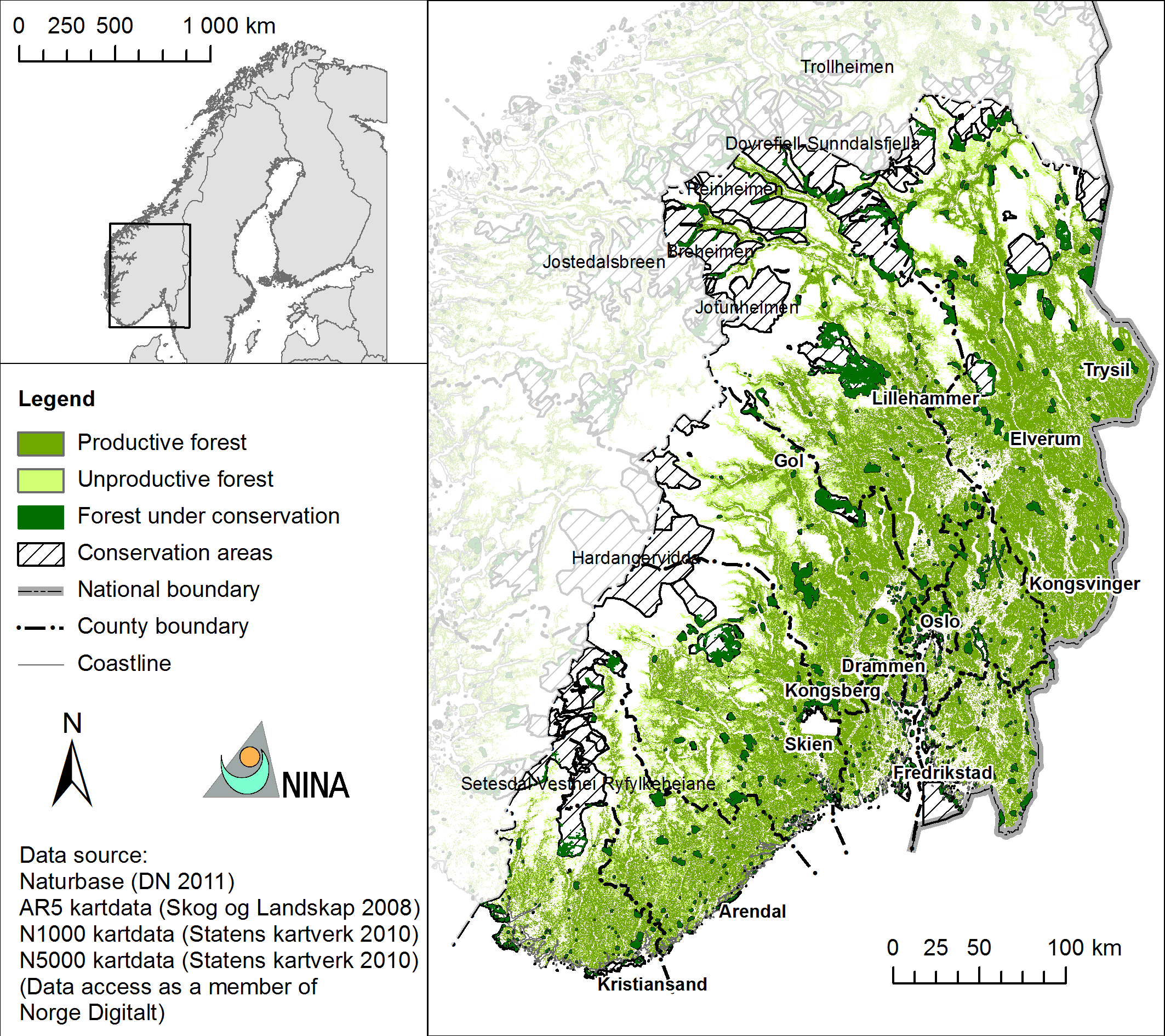Case Study: NORWAY
The Norwegian case analyses was geographically located in South- Central Norway, where the richest forest areas currently falling short on biodiversity conservation objectives, are located (see map below). The coarse grain analysis first studied the current biodiversity status in major forest types, biodiversity objectives and conservation goals, and pointed out gaps between ambition and current practice and trends. Further, the case reviewed in particular the voluntary forest conservation program, a PES-like instrument currently the main vehicle for forest conservation in Norway, in combination with direct regulatory and other instruments affecting biodiversity in forests. Potential new instruments briefly reviewed included subsidy reform, ecological fiscal transfers, procurement auctions and biodiversity offsets. Based on this, the fine grain analysis focused on two closely related themes: (1) Spatial analysis of current policy instruments, and (2) Forest owner and public preferences for further (voluntary) forest conservation. The first theme analyses closely how different instruments interact and overlap in the landscape (“Policyscape”), and how to locate areas with both low opportunity costs and relatively high biodiversity values. These would be areas giving the most biodiversity for the buck. The second theme analyses what compensation levels, and other incentives, are required to enroll sufficient forest areas into the voluntary forest conservation program to achieve conservation objectives. Further, it discusses which level of conservation would be socially efficient given costs and benefits. The case provides important findings for improving current and future conservation policies in terms of effectiveness, efficiency, equity and wider legitimacy.

Figure 1: Study area, forest cover and protected area network in South- Central Norway
Note: “Conservation areas” are the total areas, while “forest under conservation” is the part that is forest.